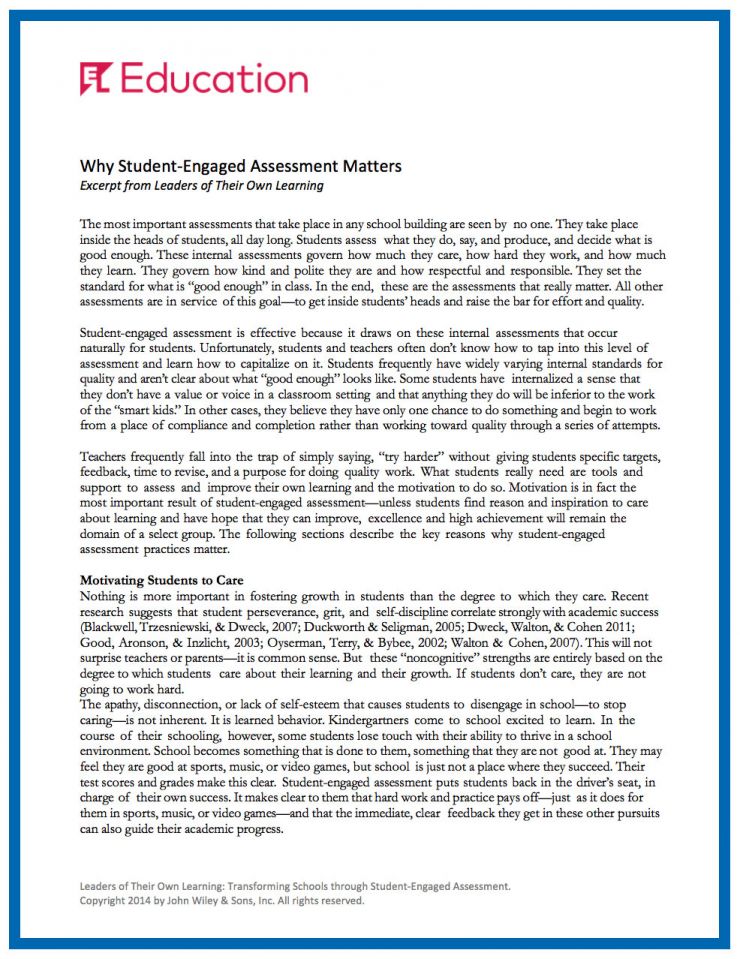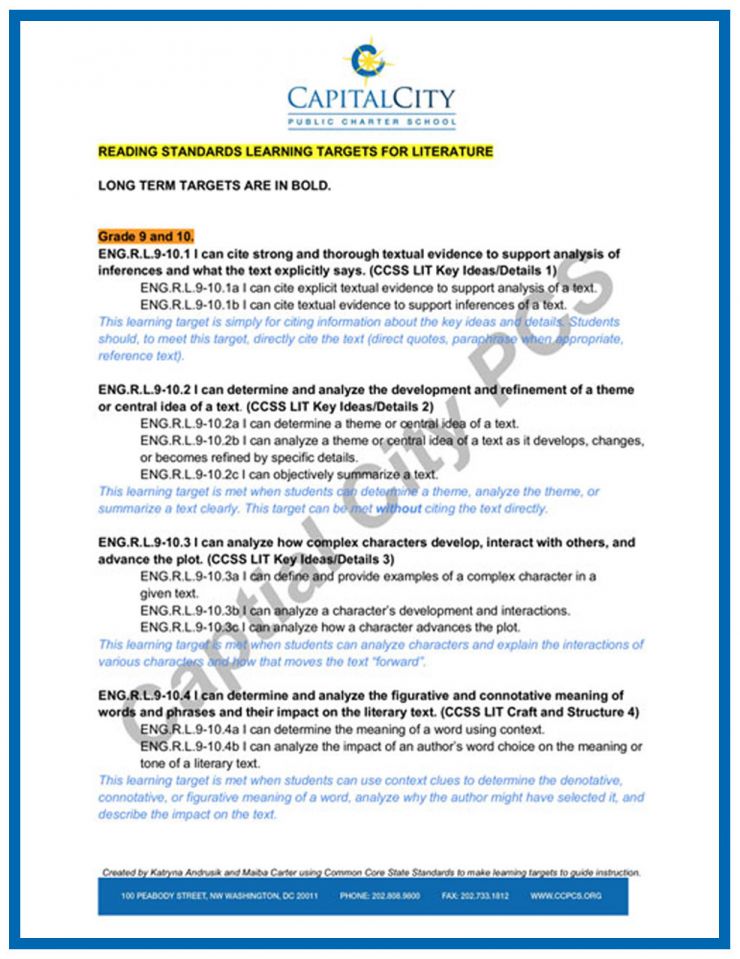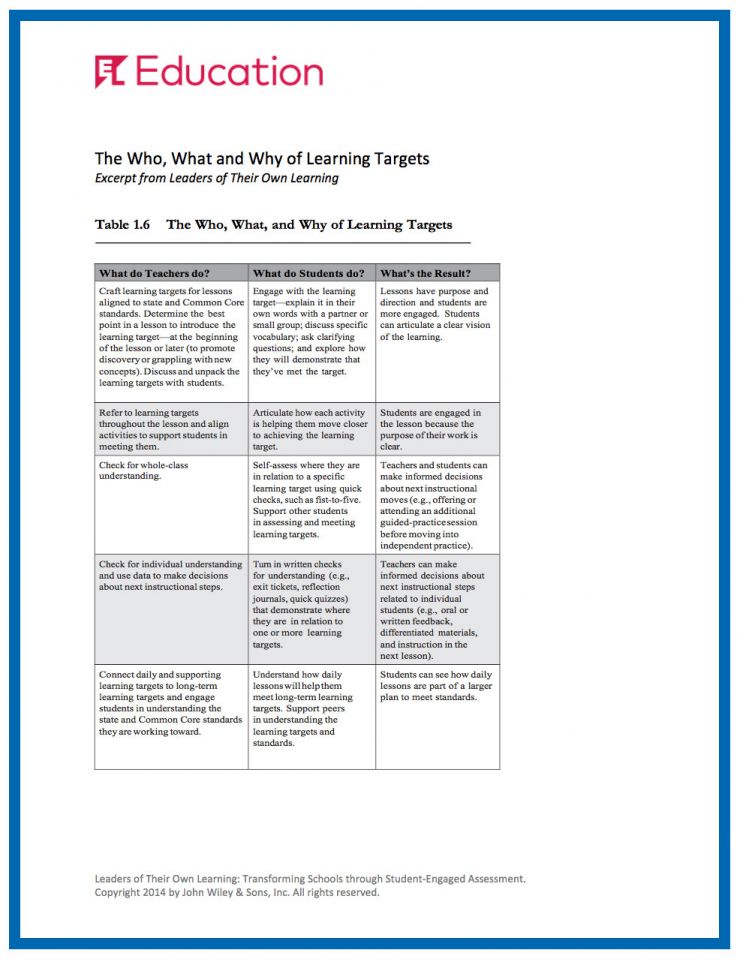View Capital City’s full educator workshop, Introduction to Learning Targets.
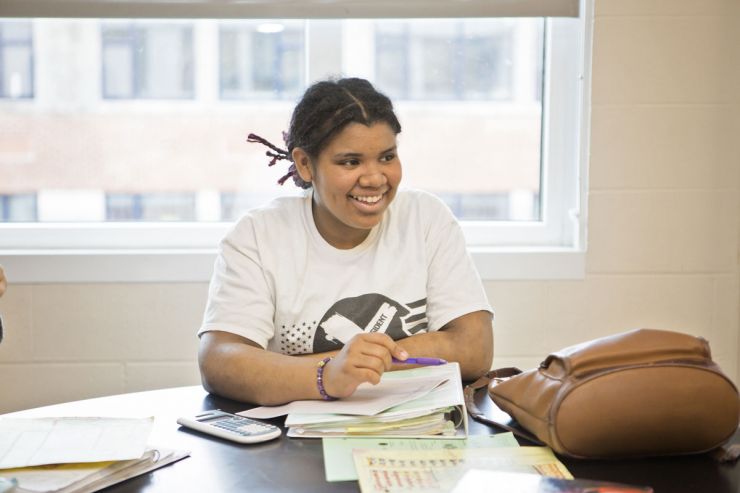
THESE RESOURCES FOCUS ON THE FOLLOWING LEARNING TARGETS:
- I can explain the what and why of student engaged assessment (SEA).
- I can identify strategies for using learning targets as a component of SEA.
- I can effectively collaborate with colleagues to develop an implementation plan.
LEARNING TARGET #1: I can explain the what and why of student engaged assessment (SEA).
Student Engaged Assessment gives students the opportunity to take ownership of their learning by assessing their knowledge in different ways.
Read Introduction to Leaders of Their Own Learning: Why Student-Engaged Assessment Matters from EL Education to learn how student engaged assessments:
- motivate students to care
- change mindsets
- engage students as leaders of their own learning
- support teacher reflection
- build a culture of collaboration, trust, and evidence
- strengthen home-school connections
- align with the Common Core
LEARNING TARGET #2 AND #3:
I can identify strategies for using learning targets as a component of SEA.
I can effectively collaborate with colleagues to develop an implementation plan.
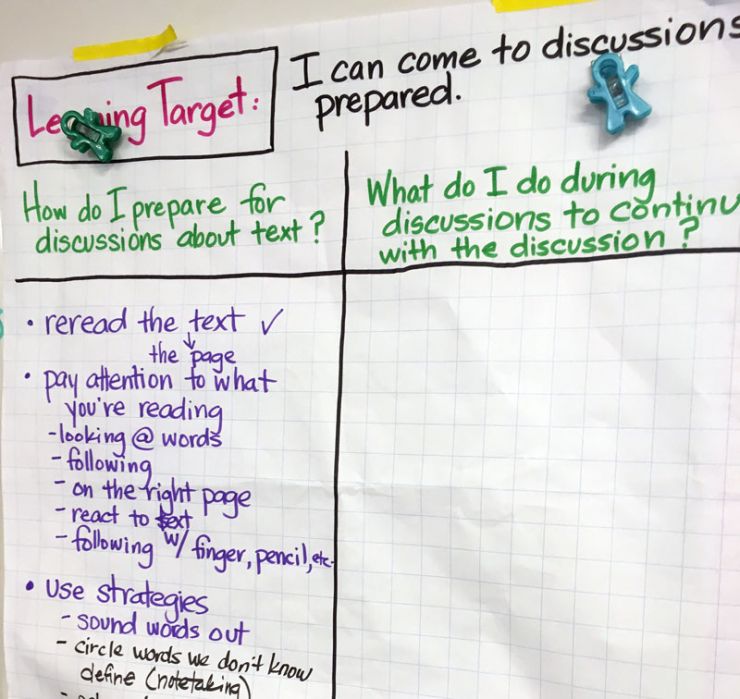
WHAT IS A LEARNING TARGET?
Learning targets are concrete goals written in student-friendly language that clearly describe what students will learn and be able to do by the end of a class, unit, project, or even a course. They begin with an “I can” statement and are posted in the classroom. The term target is used intentionally, as it conveys to students that they are aiming for something specific.
- Objectives are for the teacher – "I am going to teach this today"
- Learning targets are for the student – "I am going to learn this today"
Watch the video below to learn from two Capital City High School teachers why learning targets are effective and how to create and use them with students.
Learning targets are most effective when visible to students. Educators can post learning targets on bulletin boards and white boards, homework assignments, rubrics, test prep, and assessments. Learning targets should be incorporated into the lesson so students hear them at least once in a class period. Repetition helps students stay focused on their target and growth.
Learning targets should be in language students understand and relate to what is already being said in the class. This should not be new terminology for students. Educators can write learning targets at various points in a school year such as when reviewing curriculum and Common Core State Standards with teams or planning individual lessons. Educators should start by identifying long-term learning targets (the skill or content a student will learn). Short-term learning targets can help break down the bigger goal. As students demonstrate mastery of short-term learning targets, teachers know they are mastering the long-term target.
EXAMPLE OF HIGH SCHOOL READING STANDARD LEARNING TARGET
ENG.R.L.9-10.1: I can cite strong and thorough textual evidence to support analysis of inferences and what the text explicitly says. (CCSS LIT Key Ideas/Details 1)
- ENG.R.L.9-10.1a: I can cite explicit textual evidence to support analysis of a text.
- ENG.R.L.9-10.1b: I can cite textual evidence to support inferences of a text.
This learning target is simply for citing information about the key ideas and details. Students should, to meet this target, directly cite the text (direct quotes, paraphrase when appropriate, reference text).
View the document for more examples.
"I can" statements are powerful for students.
Instead of educators telling students what they can do, learning targets give students ownership of their learning. "I can" statements help students feel confident that they can overcome challenges to learn the skill or content.
ACADEMICS AND CHARACTER
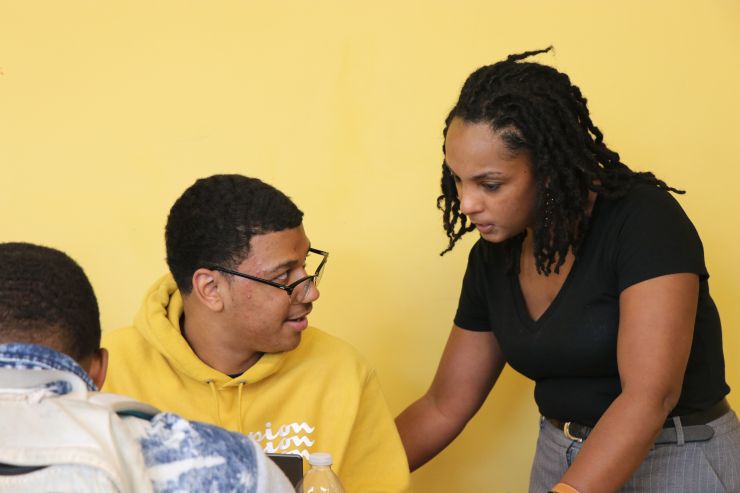
"Some of the learning targets are based on the engagement of the students and their interactions with their peers and how it will help them grow to be able to be a team member beyond high school. Some of them is about communicating to the parents what they were able to reflect on who they are as a student and hopefully push them to become a better student or continue to strive at the highest level that they may already be achieving at."
— Kendra Macko, High School Math Inclusion Teacher
Learning targets can be used to help students with their social and emotional growth as well as academics. Capital City sets expectations for character growth and uses learning targets to ensure students are meeting goals for habits of work and habits of mind.

EXAMPLES OF HIGH SCHOOL HABITS OF MIND LEARNING TARGETS:
- I can reflect on and debrief lessons and experiences to improve retention of information, to make generalizations and connections, and to set goals for future learning.
- I can produce multiple drafts of my work, compare each draft to examples and rubrics to improve my work, and use feedback and critique to revise my work to a high standard of quality.
- I can communicate the process, content, and skills in my learning and represent my thinking using many different formats, such as graphic organizers, recording forms, lab reports, journals, quick-writes and summaries.
For more suggestions on how to develop strong learning targets for students, review the following criteria from the EL Education Core Practices.
CRITERIA OF STRONG TARGETS
- Derived from national or state standards embedded in school or district documents such as curriculum maps and adopted program materials.
- Written in student-friendly language and begin with the stem “I can...”
- Measurable and use concrete, assessable verbs (e.g., identify, compare, analyze). The verb suggests the way in which the target will be assessed.
- Specific, often referring to the particular context of a lesson, project, or case study.
- Focused on the intended learning, not the intended doing. That is, they are phrased as statements about the skills or knowledge students will develop as opposed to what students will complete (e.g., “I can describe the ideal habitat for a polar bear” vs. “I can write a paragraph about the habitat of a polar bear”).
- Matched to the cognitive process demanded of students (e.g., knowledge, reasoning, skill).
Watch this video from EL Education to hear students discuss the power of learning targets.
Learning targets can be used in two ways. Sometimes educators use them to guide students when they know they will need a roadmap. Other times, teachers can let students grapple and unpack the learning target after the lesson in order to help them metacognitively reflect after the lesson. Learning targets can both be an aim as well as a tool for reflection.
WHAT, WHY, AND HOW OF LEARNING TARGETS
Read the What, Why, and How of Learning Targets from EL Education to explore strategies for how to:
- refer to learning targets throughout the lesson
- check for whole-class understanding
- check for individual understanding
- connect to long-term learning targets
- integrate character learning targets alongside academic learning targets
- ensure the rigor of learning targets
- align standards, learning targets, and assessments.

